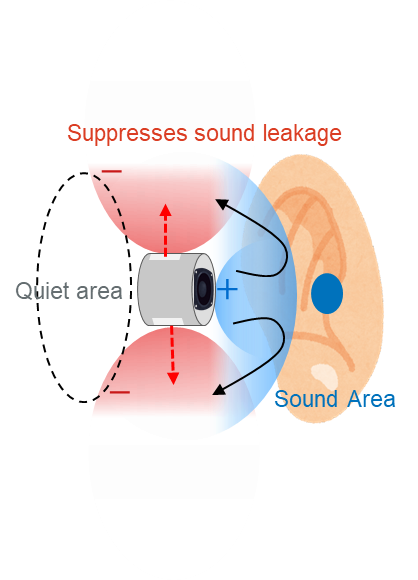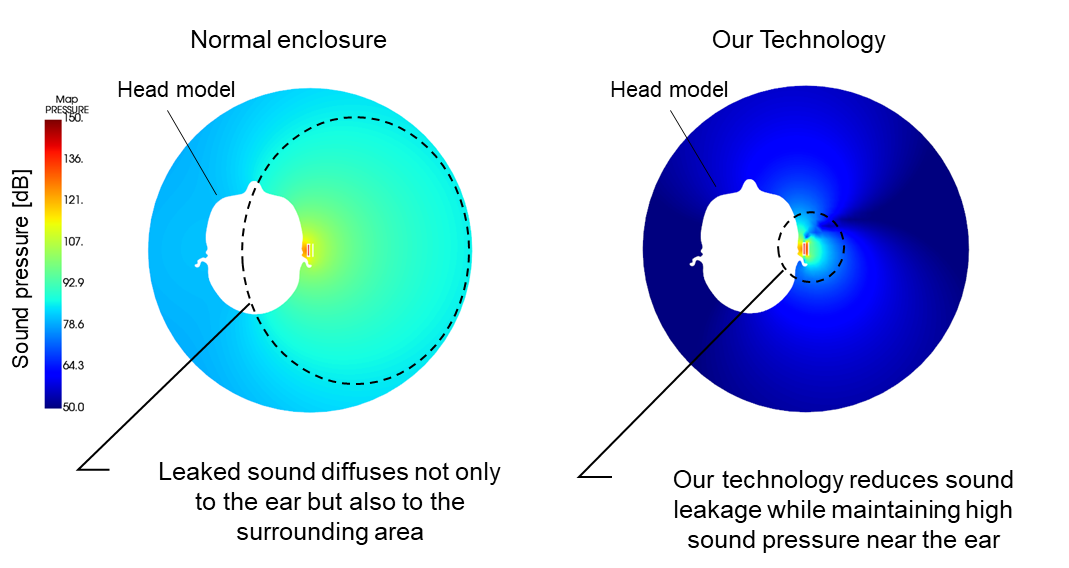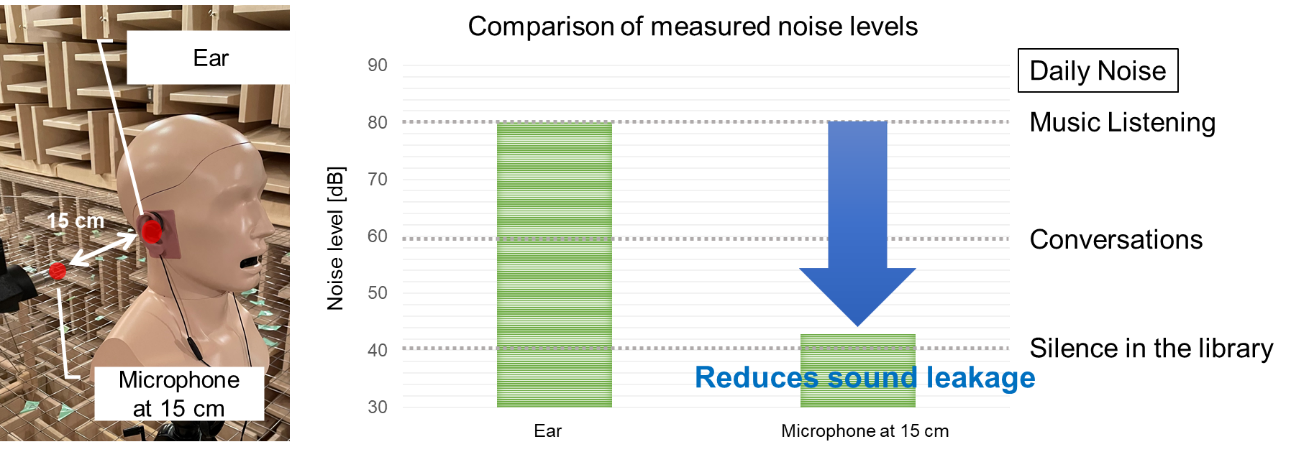Microsoft ends support for Internet Explorer on June 16, 2022.
We recommend using one of the browsers listed below.
- Microsoft Edge(Latest version)
- Mozilla Firefox(Latest version)
- Google Chrome(Latest version)
- Apple Safari(Latest version)
Please contact your browser provider for download and installation instructions.
November 9, 2022
Developed earphone design technology that only the user can hear without blocking the ear
NTT developed a single speaker with sound wave control that delivers sound to the user while counteracting sound leakage to the surroundings
Tokyo - November 9, 2022 ― NTT Corporation (TYO:9432), today announced that its Computer & Data Science Laboratories has developed a new speaker enclosure design technology that holds sound in a very small space. Our technology enables the development of open-ear earphones that do not leak sound. With these earphones, you will be able to communicate with people around you without worrying about sound leakage to the surroundings. Open-ear earphones using our technology will be exhibited at NTT R&D Forum Road to IOWN 20221.
With the increase in remote work and online education, earphones are becoming more and more necessary in our daily lives. However, wearing earphones for long periods of time places a heavy burden on the ears, and there are concerns about health risks. Canal-type earphones and headphones block out external sound, making it difficult to hear sounds around us or notice telephone calls or approaching vehicles. Open-ear earphones, such as neck speakers and bone-conduction earphones, have the disadvantage of leaking sound into the surroundings. Therefore, we have developed a speaker enclosure design technology that can realize open-ear earphones with minimal sound leakage.
The sound emitted by a typical speaker spreads in all directions. NTT has developed a new speaker enclosure design technique that uses only a single speaker to keep the sound in a localized space near the ear by drilling multiple holes at appropriate locations on the sides of the speaker enclosure. When positive-phase sound waves radiated from the front of the speaker reach the ear, they are reflected by the ear, generating sound waves that lead to sound leakage. Our technology suppresses these sound waves of sound leakage with sound waves in the opposite phase emitted from the holes in the sides of the speaker enclosure.
This enables the sound leakage to become very small as sound moves away from the ear. (Figure 1)
 Figure 1: New speaker enclosure that reduces sound leakage
Figure 1: New speaker enclosure that reduces sound leakage
We have simulated sound leakage when an enclosure using our technology and a normal enclosure are worn on the ear. With the normal enclosure, high sound pressure can be observed not only at the ear but also over a wide area. On the other hand, with our technology, high sound pressure can be observed at the ear, while sound pressure around the head is low and sound leakage is reduced (see Figure 2).
 Figure 2: Sound pressure distribution around the head when wearing a normal enclosure and our technology enclosure on the ear
Figure 2: Sound pressure distribution around the head when wearing a normal enclosure and our technology enclosure on the ear
We compare the noise level at the ear of an open-ear earphone using our technology with the noise level recorded by a microphone at a distance of 15 cm. We observe 80 dB at the ear but 43 dB at the microphone 15 cm away, which reduces sound leakage. The noise level at the ear is about as loud as listening to music, but at a distance of 15 cm, the noise level is equivalent to the quietness of a library (see Figure 3).
 Figure 3: Comparison of the measured noise level of a sound leakage measurement microphone at the ear and at a distance of 15 cm.
Figure 3: Comparison of the measured noise level of a sound leakage measurement microphone at the ear and at a distance of 15 cm.
Our technology was developed with the aim of preventing sounds that we do not want to be heard from leaking into the surrounding environment without compromising comfort. We will continue to conduct research and development to realize the ultimate personal acoustic space and consider applications in various places such as airplanes, automobile seats, and offices.
Open-ear earphones utilizing our technology will be released by NTT Sonority2. They will also be exhibited at the NTT R&D Forum Road to IOWN 2022.
1NTT R&D Forum Road to IOWN 2022
URL:https://www.rd.ntt/e/forum/
2NTT Sonority: https://ntt-sonority.com/en/
About NTT
NTT believes in resolving social issues through our business operations by applying technology for good. We help clients accelerate growth and innovate for current and new business models. Our services include digital business consulting, technology and managed services for cybersecurity, applications, workplace, cloud, data center and networks all supported by our deep industry expertise and innovation.
As a top 5 global technology and business solutions provider, our diverse teams operate in 88 countries and regions and deliver services to over 190 of them. We serve 85% of Fortune Global 100 companies and thousands of other clients and communities around the world.
For more information on NTT, visit www.global.ntt.
Media Contact
Press Relations
nttrd-pr@ml.ntt.co.jp
Information is current as of the date of issue of the individual press release.
Please be advised that information may be outdated after that point.
NTT STORY
WEB media that thinks about the future with NTT










